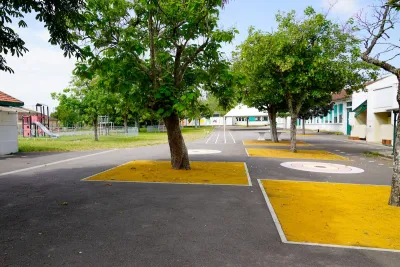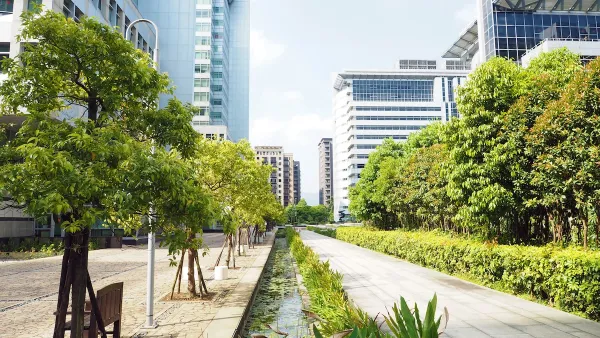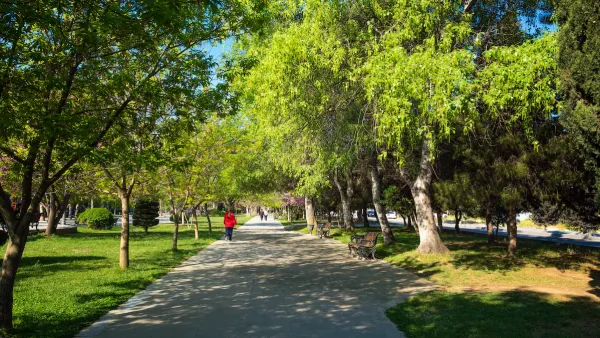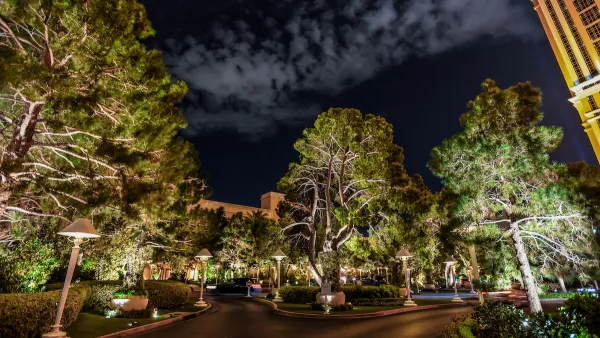More schools are transforming asphalt-covered playgrounds into shady oases that help reduce temperatures and absorb emissions.

In an article for La Voce di New York, Amelia Tricante describes how schools around the country are revamping their schoolyards to include more trees and plants, providing much-needed green space in urban areas.
As Tricante explains, “It isn’t merely about aesthetics; it’s part of a larger push to address the public health risks posed by extreme heat, especially in schools located in urban areas with limited green space.”
Asphalt, which blankets many schoolyards and playgrounds, retains heat and contributes to the urban heat island effect, driving up temperatures on surfaces and in the surrounding air. “Researchers have measured surface temperatures of up to 145 degrees Fahrenheit, putting children at risk of heat-related illnesses and burns. Even alternative surfaces like rubber and artificial turf, which many schools have turned to in recent years, can become unbearably hot.”
But tree planting and landscaping efforts cost money school districts often don’t have. In California, a state bond on November’s ballot could contribute to tree planting initiatives, while Los Angeles has pledged $500 million to schoolyard greening efforts. “In districts where resources are stretched thin, finding a balance between cooling the playgrounds and managing ongoing costs remains a difficult equation.”
FULL STORY: Confronted with Extreme Heat, U.S. Schools Are Greening the Asphalt Jungle

National Parks Layoffs Will Cause Communities to Lose Billions
Thousands of essential park workers were laid off this week, just before the busy spring break season.

Retro-silient?: America’s First “Eco-burb,” The Woodlands Turns 50
A master-planned community north of Houston offers lessons on green infrastructure and resilient design, but falls short of its founder’s lofty affordability and walkability goals.

Delivering for America Plan Will Downgrade Mail Service in at Least 49.5 Percent of Zip Codes
Republican and Democrat lawmakers criticize the plan for its disproportionate negative impact on rural communities.

Test News Post 1
This is a summary

Test News Headline 46
Test for the image on the front page.

Balancing Bombs and Butterflies: How the National Guard Protects a Rare Species
The National Guard at Fort Indiantown Gap uses GIS technology and land management strategies to balance military training with conservation efforts, ensuring the survival of the rare eastern regal fritillary butterfly.
Urban Design for Planners 1: Software Tools
This six-course series explores essential urban design concepts using open source software and equips planners with the tools they need to participate fully in the urban design process.
Planning for Universal Design
Learn the tools for implementing Universal Design in planning regulations.
EMC Planning Group, Inc.
Planetizen
Planetizen
Mpact (formerly Rail~Volution)
Great Falls Development Authority, Inc.
HUDs Office of Policy Development and Research
NYU Wagner Graduate School of Public Service





























